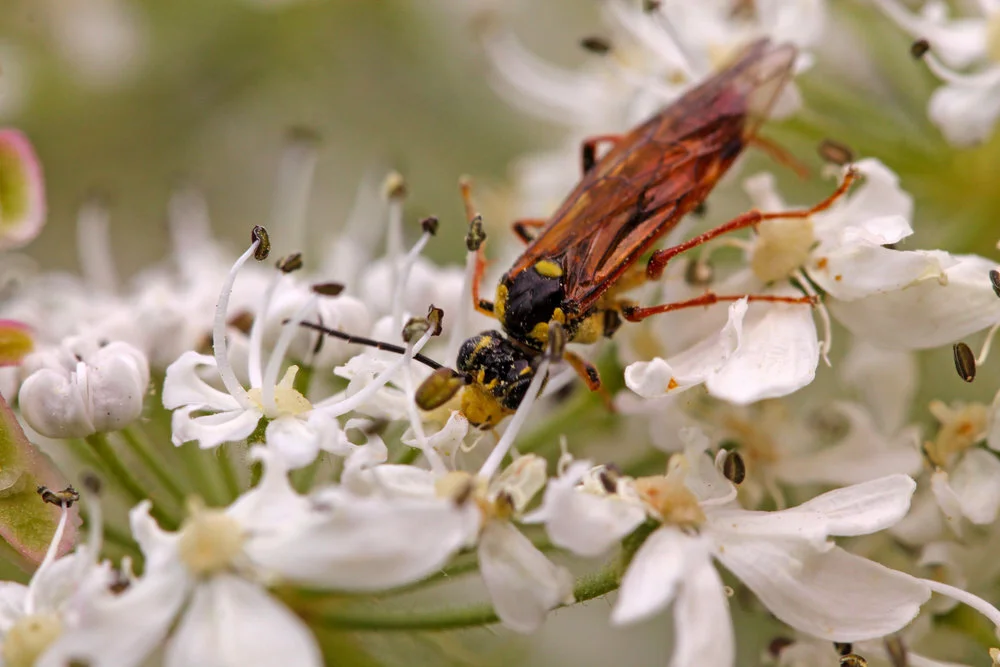The Hawaiian honeycreeper bird ʻiʻiwi may lose its home to the Rapid ʻOhiʻa Death razing Hawaiʻi's forests. (Photo © Jared Bernard)
While lava is oozing across the Puna district in Hawaiʻi, a new fungal disease is destroying Hawaiʻi’s native forests. It exclusively kills the tree known as ʻōhiʻa, a native myrtle with both cultural and ecological significance. ʻŌhiʻa trees are integral to the identity and legends of indigenous Hawaiian people. According to Dr. Ric Lopez, director of the US Forest Service’s Institute of Pacific Islands Forestry in Hilo, ʻōhiʻa account for 80% of the trees in native Hawaiian forests. They therefore form the basis of the ecosystems upon which many endangered species rely.
But in 2014, foresters collected samples of dying ʻōhiʻa with dark discolored wood from Leilani Estates in the Puna district, the very same neighborhood now being devoured by lava. The samples went to the USDA’s Pacific Basin Agricultural Research Center in Hilo where they were studied by plant pathologist Dr. Lisa Keith. She cultured them and found a translucent fungus with long black fruiting bodies. A genetic analysis identified it as two previously unknown strains of Ceratocystis.
“We have only currently found the fungus on ʻōhiʻa,” Keith says. She and her team discovered that the new disease kills ʻōhiʻa trees in just 100 days, earning it the moniker of Rapid ʻŌhiʻa Death (ROD).
Alarm bells went off and now scientists are racing to learn everything they can about the fungus. “We are doing molecular analysis of the ʻōhiʻa fungus with other similar strains, trying to figure out how the pathogen got to Hawaiʻi and on what plant material it might have come in on,” says Lopez. “Right now there is no perfect match with anything else in the world.”
The devastation is spreading rapidly. Between the time the disease was first detected in late 2014 until May 2018, the disease has killed 135,000 acres. Until last month, Rapid ʻŌhiʻa Death was thought to be confined to the island of Hawaiʻi, although its mode of transmission remains unknown, so its potential to move to other islands in the archipelago is also unknown. As a precaution, the Hawaiʻi Department of Agriculture has instituted a quarantine of shipments of ʻōhiʻa wood, flowers, and mulch transported from Hawaiʻi Island. Violation carries a stiff fine of up to $25,000 or five years in prison. This is monumental because ʻōhiʻa has indelible significance in the legends of indigenous Hawaiian people.
A sea of dead ʻōhiʻa trees is visible during a helicopter survey of Manukā State Wayside Park on Hawaiʻi Island. (Photo © Jared Bernard)
State legislators have also vied to shore up new funds to combat Rapid ʻŌhiʻa Death. Rep. Richard Onishi, D-Hilo, pushed through a bill for $600,000 to conduct ROD studies at Keith’s lab at PBARC.
This seems odd to me. I ask him why the state legislature should arrange funds for a federal agency. “The federal government’s support of this project has been to provide the researcher, limited staff, and facilities,” Onishi tells me. “This funding will go to provide additional funding for two post-doctoral fellows, continued funding for field technicians, materials and supplies, and a new growth chamber.”
Knowledge of pathways of infection is listed as a top priority in the Hawaiʻi Interagency Biosecurity Plan for 2017 – 2027. Nonetheless, despite all the quarantines and alerts, last month the disease was detected on Kauaʻi, 320 miles away from Hawaiʻi Island.
“There is still much to learn,” says Keith. “We think one way the fungus is being spread is by infected beetle frass.” Recent evidence suggests that at least three bark beetle species may be able to transport the disease. In the meantime, officials continue to raise awareness, reminding people to respect the quarantine and to fastidiously clean shoes before visits to native Hawaiian forests. Otherwise the legendary ʻōhiʻa—protector of a tapestry of rare species—could vanish.







